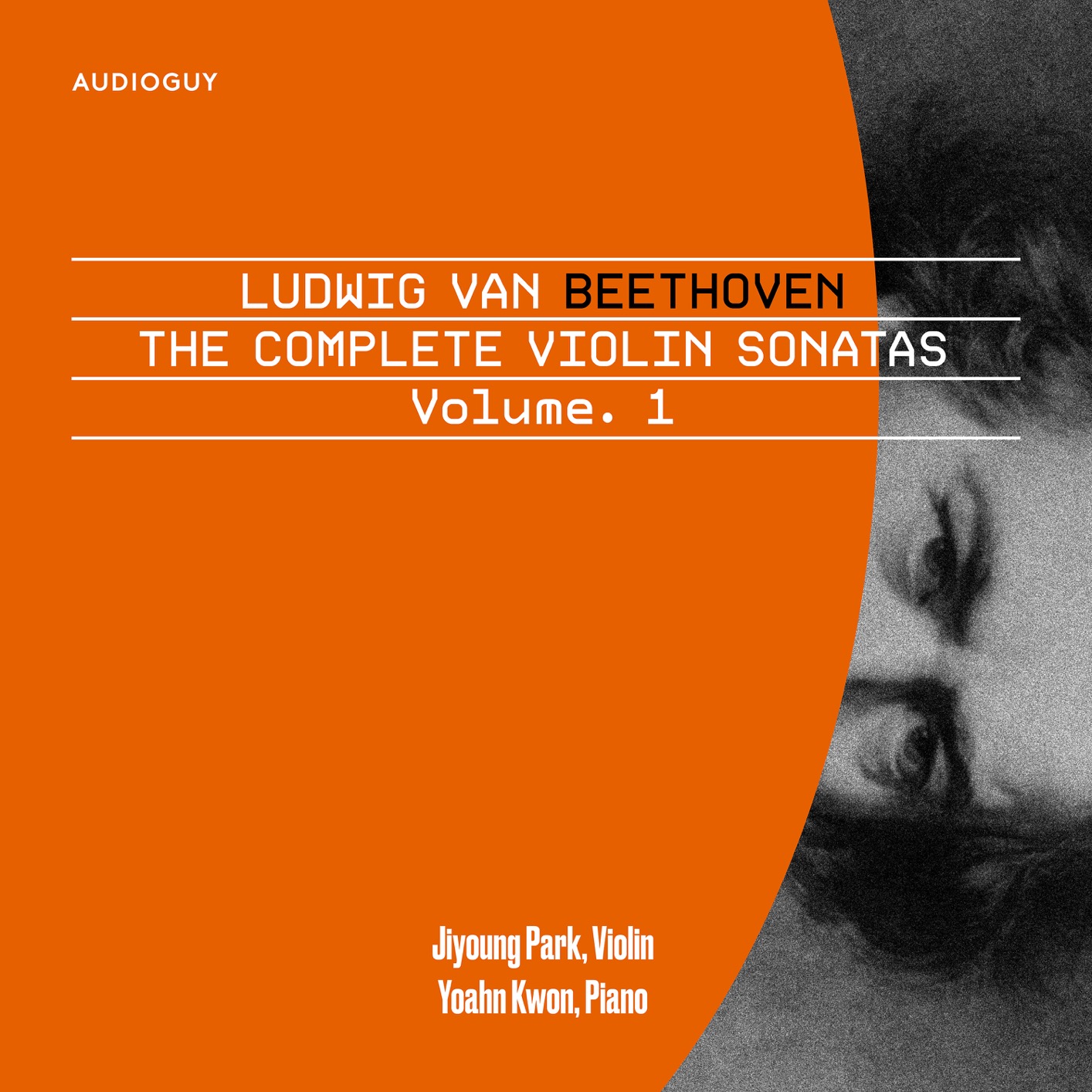
Jiyoung Park & Yoahn Kwon – Beethoven – The Complete Violin Sonatas, Volume. 1 (2020)
FLAC (tracks) 24 bit/176,4 kHz | Time – 01:05:07 minutes | 1,97 GB | Genre: Classical
Studio Masters, Official Digital Download | Digital Booklet, Front Cover | © Audioguy
This wonderful piece, Beethoven Sonata no.2, it is unknown when exactly this piece was composed. But as the result of Nottebohm’s study on Beethoven’s sketch note, it is assumed to be composed in 1795. The piece is still clearly inuenced by Mozart, but perhaps surprisingly, it is Beethoven’s mood that is lighter. It lacks dynamics and articulations comparing to the other Beethoven sonatas. The first movement has a dierent character, more aable, witty and it ows with humour, fascinating interplay of violin and piano. The slow movement is based on a lyrical, melancholic theme. Each of its two parts is gently announced by the piano, then repeated by the violin. The Finale marks something of a return to the good-natured opening, Allegro piacevole denoting pleasure rather than re. It has a high-spirited rondo with frequent humourous touches. Among the three Sonatas in Op.12, it is possible to assume that Sonata no.2 has been composed first and this piece was dedicated to Antonio Salieri just as Sonata no.1.
Sonata for Violin and Piano no.3 in D major, Op.12 no.3
Beethoven Sonata No.3 features a sense of grandeur, power and majesty found in few other works of Beethoven’s early years. The piano writing is often of near-heroic proportions, by far the most substantial in the first three sonatas. It might just as well have been channeled into a sonata for solo piano. It answers one each other and doesn’t meet with violin accompaniment but so involved does the game of catch-up become in this delightfully playful movement, both instruments urging each other on to new deeds. The slow movement is the first Adagio in Beethoven’s series, con molto espressione. It has very much the emotional core of the work and one of the nest slow movements in early Beethoven. The finale is energetic, joyous rondo with a catchy if hardly distinctive main theme. Frequent contrasts of dynamics and register are a constant feature of the movement. Beethoven’s Sonata for violin No.1 through No.3 are included in Op.12. These three delicate pieces were composed in the same period between 1797 and 1789 when Beethoven was 27 to 28 years old.
Sonata for Violin and Piano no.10 in G major, Op.96
Beethoven composed his final violin sonata in 1812, nearly ten years after his second-to-last. It was written for the renowned French violinist Pierre Rode, who disliked overwrought virtuosity and gaudy endings and thus may have inuenced the calmness of this sonata. Gentle, musing atmosphere of Op. 96 is more probably an outgrowth of Beethoven’s evolving inner life. We encounter a “kinder, gentler” Beethoven, passing from his heroic middle period into a more ruminative, profound late period. In this piece, pain and struggle recede and are replaced by an intimate, pastoral warmth, relatively lyrical, subdued work. The first movement begins with a rustling, feathery trill, establishing the pastoral tone of the sonata. Shimmering trills, symmetrical arpeggios and melodies, and seamless exchanges between piano and violin set this apart as one of Beethoven’s most unique and fascinating violin sonata movements. The warm, hymn-like second movement, marked “slow and expressive,” is one of Beethoven’s most beautiful Adagios. A flowing, tranquil stream of melody is couched in rich harmonies. The peaceful movement concludes with a moment of suspended animation before diving into the more agitated third movement, Scherzo. Though distinguished by syncopated, end-of-the-bar accents, the music never becomes brusque. The Scherzo alternates with a graceful, waltzing Trio set over a bagpipe drone, again reinforcing the work’s pastoral character. In the fourth movement, Beethoven finally settled on a genial, folk-like melody as the basis for an unconventional set of variations. Four increasingly active variations lead to a prolonged, expressive Adagio, somewhat reminiscent of the atmosphere of the second movement. The initial theme eventually returns, leading to a boisterous section that is interrupted by a quiet, mysterious canon before returning to the original theme.The listener is surprised by a short, final Adagio, after which the violin and piano regain their resolveto exciting and joyous conclusion.
Tracklist
1. Jiyoung Park & Yoahn Kwon – Ludwig van Beethoven: Violin Sonata No.2 in A Major, Op. 12 No. 2: 1. Allegro vivace
2. Jiyoung Park & Yoahn Kwon – Ludwig van Beethoven:Violin Sonata No.2 in A Major, Op. 12 No. 2: 2. Andante, Più tosto allegretto
3. Jiyoung Park & Yoahn Kwon – Ludwig van Beethoven: Violin Sonata No.2 in A Major, Op. 12 No. 2: 3. Allegro piacevole
4. Jiyoung Park & Yoahn Kwon – Ludwig van Beethoven: Violin Sonata No. 3 in E-Flat Major, Op. 12 No. 3: 1. Allegro con brio
5. Jiyoung Park & Yoahn Kwon – Ludwig van Beethoven: Violin Sonata No. 3 in E-Flat Major, Op. 12 No. 3: 2. Tema con variazioni: Andante con moto
6. Jiyoung Park & Yoahn Kwon – Ludwig van Beethoven: Violin Sonata No. 3 in E-Flat Major, Op. 12 No. 3: 3. Rondo: Allegro
7. Jiyoung Park & Yoahn Kwon – Ludwig van Beethoven: Violin Sonate No. 10 in G Major, Op. 96. 1 Allegro moderato
8. Jiyoung Park & Yoahn Kwon – Ludwig van Beethoven: Violin Sonate No. 10 in G Major, Op. 96: 2. Adagio espressivo
9. Jiyoung Park & Yoahn Kwon – Ludwig van Beethoven: Violin Sonate No. 10 in G Major, Op. 96: 3. Scherzo (Allegro)
10. Jiyoung Park & Yoahn Kwon – Ludwig van Beethoven: Violin Sonate No. 10 in G Major, Op. 96: 4. Poco allegretto
Download:
mqs.link_Jiy0ungParkY0ahnKw0nBeeth0venTheC0mpleteVi0linS0natasV0lume.12020241764.part1.rar
mqs.link_Jiy0ungParkY0ahnKw0nBeeth0venTheC0mpleteVi0linS0natasV0lume.12020241764.part2.rar
mqs.link_Jiy0ungParkY0ahnKw0nBeeth0venTheC0mpleteVi0linS0natasV0lume.12020241764.part3.rar



















